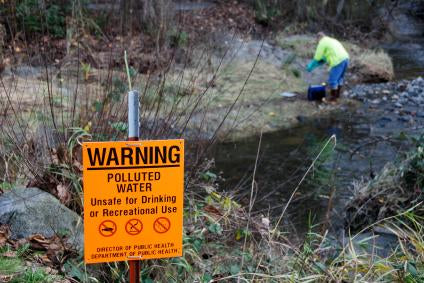
Most consumers know that their State water authorities, along with the EPA, monitor and treat municipally produced water. Water treatment plants, in conjunction with other organizations, collect and test water on a regular basis. What many consumers do not know is that this testing is restricted to a relatively small number of contaminants and toxins. And now, to make matters worse, there is concern over a growing number of "emerging contaminants".
In broad terms, emerging contaminants can be defined as synthetic or naturally occurring chemicals or as any type of microorganism that is not currently or commonly monitored. In addition, these contaminants must also be known or suspected to cause adverse ecological and/or human health effects. (Source: USGS).
What makes this a big concern for those who drink unfiltered tap water is that these contaminants may have been making their way into groundwater and surface water sources for years now. They were not identified earlier because testing methodology for them was not available, or they were not tested because they were not thought to be a public health issue. Another reason they were not tested for is simply because they did not exist in the past.
By that we mean that some of these new contaminants only began to synthesize into hazardous materials as more and more new pollutants were added to the environment. Some examples of products or chemicals that cause these emerging contaminants include: high-strength detergents, massive amounts of discarded pharmaceuticals, personal-care products of all sorts, flame retardants, sterols, pesticides, as well as many types of organic contaminants not thought of in the past.
These contaminants have been found in both ground water and surface water sources in the United States and around the globe. The sad news is most of these emerging contaminants can be traced back to human behavior. The good news is laboratories are now equipped to test for many of these harmful contaminants and national groups, such as the EPA and the USGS, are working on plans to include some of the more harmful contaminants to their testing requirements.
In the meantime, consumers who wish to protect their families from these contaminants should consider installing a high-quality water filter. Point of Use water filters, as well as Point of Entry water filter systems, are capable of removing many of the contaminants that are now being reported as being in our drinking water. Common sense dictates that the more contamination you can remove from your drinking water the less likely it is your family will suffer adverse effects caused by many of these contaminants.
It should also be noted that showering in contaminated water can also bring about adverse health conditions. As water is forced through the shower head, many by-products, including those from chlorine, are virtually atomized and are inhaled into the lungs. Studies have suggested that consumers get as much contamination from showering in unfiltered water as they do from drinking unfiltered water.
If you are concerned about your tap water, contact a reputable water filter vendor and discuss your needs. You might be surprised at how affordable and easy it is to protect your family from these harmful contaminants.


Share:
Trihalomethanes in Drinking Water
Hepatitis and Questionable Water Supplies